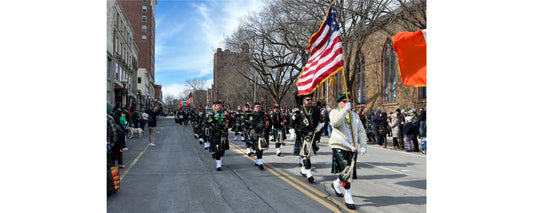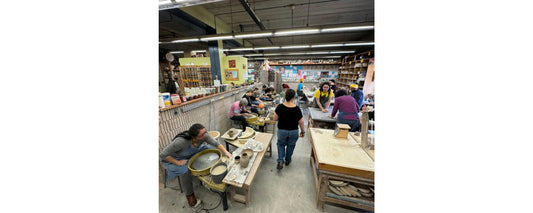From the back of the cello section in London’s Royal Philharmonic to the conductor’s podium of the New Haven Symphony Orchestra, William Boughton has held onto a few basic ideals: Trust the musicians. Broaden the repertoire. Serve the community.
As a young cellist, he was rankled by the tyrannical approach of some conductors. “You can be insistent for the right sound that the music requires, and you can keep working at something, but it has to be done in a way that is respectful, cooperative, creative,” Boughton says.
His other pet peeve was the narrow range of works that were performed—“greatest hits” like Beethoven’s Ninth Symphony, Orff’s Carmina Burana, Vivaldi’s The Four Seasons—while so many other great pieces were sidelined. “Musicians can get very stale just playing that music. And audiences actually, in the end, get bored with it as well,” Boughton says. “I think that I arrogantly thought, as a young man, ‘I can do that. I can stand up there and do that as well. And then I’m in control of the repertoire.’”
sponsored by
So take control he did. In 1980 Boughton formed the English Symphony Orchestra, a strings-only ensemble of 24 musicians playing a repertoire ranging from Baroque to contemporary. Within just a few years, the ESO’s recordings of little-played masterworks had propelled it to international acclaim. During a 25-year career with the ESO, Boughton commissioned more than 20 new works, launched an Elgar festival, collaborated with the BBC and guest-conducted orchestras worldwide.
In 2007, Boughton arrived in New Haven from the United Kingdom with his wife, Jan, two children and “a suitcase each and a musical instrument each. We sold everything in the UK, so we really left that world behind and came on this new adventure,” he recalls. That adventure, which ended with Boughton’s final NHSO concert last Thursday, was a bit more than he’d bargained for, when he discovered upon arriving that the orchestra was in serious financial trouble. “So we sat down and thought, OK, what should an orchestra look like in the 21st century?” Boughton recalls. “What’s the community it’s serving, and what is that community going to look like in the future?”
Since then, the NHSO’s education department “has just grown out of all recognition,” Boughton says. It’s now staffed full-time and reaches as many as 20,000 children each year through family and kids’ concerts, workshops, classes and school visits. The Young Composer Project gives Connecticut high school students a chance to study under the NHSO’s composer-in-residence. A joint orchestral fellowship program with Neighborhood Music School gives high school students special workshop and performance opportunities. And the Harmony Fellowship for Underrepresented Musicians supports students from diverse backgrounds who have an undergraduate degree and are pursuing an orchestral career.
During his 12 years as musical director, the NHSO commissioned 13 world premieres, among the most by an American regional orchestra, Boughton says. He also oversaw the creation of the two-year composer-in-residence program. Audiences haven’t always been enthusiastic about the resulting “cutting-edge” music. “It was a huge leap from playing Beethoven and Brahms and Mozart into America in the 21st century,” Boughton says. “But they stuck with it.”
Enthusiasm appeared to be universally high at Boughton’s farewell concert, a “bucket list” performance of Mahler’s Symphony No. 3—“a symphony that mirrors the world,” Boughton says. The first movement, running about 35 minutes (the length of some entire symphonies), is titled “Introduction—Pan’s Awakening; Summer Marches in (Procession of Dionysus).” It’s followed by five more movements, about an hour in total, tracing creation from the “flowers of the field” to animals, man, the angels and, finally, love. “It’s one of those incredible works that takes you on this extraordinary journey,” Boughton says, “and you ascend to… the love of the universe.”
Thursday’s audience did, indeed, seem to ascend. “For the audience, it’s one of those pieces that you will only get to hear maybe a couple of times in your life because it is so huge and so expensive to put it on. It’s very rarely performed,” Boughton says. The Woolsey Hall stage was built out to accommodate the 97 musicians of the combined NHSO and Yale Philharmonia (both celebrating 125 years), with Trinity Girls’ Choir and the United Girls’ Choir in the balcony to sing a portion of the fifth movement. Upon entering the stage, Boughton had to weave around eight double basses and two harps to reach the front.
From the primeval thunder of the timpani to the brassy fanfare of the French horns, from the distant call of an offstage trumpet to the full, rich voice of mezzo-soprano Anne Maguire, from the dulcet tones of the girls’ choirs to the resounding music of the entire orchestra in a truly grand finale, Mahler’s Third was a crowd-pleaser. The evening ended with a standing ovation and sustained applause that called Boughton back to the stage multiple times.
What’s next for New Haven’s retiring maestro? “Doing nothing,” he says. That means, first, the do-it-yourself job of refinishing the barn floor at his Guilford home in preparation for his daughter’s June wedding there. He looks forward as well to spending time in his garden and small orchard, where “we’ve never actually beaten the deer to any of the fruit.” When I ask whether he’s picking up his cello again, Boughton laughs. “I dabble in it.”
Being a professional musician is “a tough life,” he says, requiring serious daily practice and often the juggling of multiple jobs. He hopes New Haven knows the “dedication and devotion to music and
He recalls an email he received early in his tenure in New Haven. A professional wrestler who had spent his life attending rock concerts had heard the NHSO perform Beethoven’s Ninth Symphony. “He said, ‘I sat there listening to Beethoven 9 in tears.’ I just pictured this huge professional wrestler sitting in Woolsey Hall crying, listening to it,” Boughton says. “And he said it was the most moving thing that he’d ever been to, and the only orchestral concert he’d ever been to.”
People who don’t go to hear orchestral music, he says, “are missing out on some of man’s greatest creations.”
New Haven Symphony Orchestra
4 Hamilton St, New Haven (map)
(203) 865-0831
www.newhavensymphony.org
Written by Kathy Leonard Czepiel. Images 1-12 photographed by Dan Mims. Image 13 photographed by Kathy Leonard Czepiel.








